
fno.org
|
|
| Vol 18|No 4|March 2009 | |
| Please feel free to e-mail this article to a friend, a principal, a parent, a colleague, a teacher librarian, a college professor, a poet, a magician, a vendor, an artist, a juggler, a student, a news reporter or to anyone else you think might enjoy it. | ||||||||||||||||||||||||||||||
Reading Across
By Jamie McKenzie, ©2009, all rights reserved. |
 |
|||||||||||||||||||||||||||||
|
Reading? We need a broadened conception of reading to capture the many different types of reading that occur when considering information in different formats across different media. As mentioned in the companion piece to this article ("Reading Between the Lines"), students must now be able to "read a face" as well as a page, must be able to read a photograph or a chart or a situation. Reading as understanding applies to many aspects of life. |
||||||||||||||||||||||||||||||

© 2008 Jamie McKenzie |
What is the mood communicated by the statue on this grave in the famous Cimetiere du Pere Lachaise in Paris? What details in the way she is sitting communicate the mood? (click for larger image) What details in her face communicate the mood? (click for larger image) Why do you suppose someone wanted this statue on top of their grave? Would you? |
|||||||||||||||||||||||||||||
|
A Dozen Literacies What is a literacy? For this article we will define it as the capacity to analyze, interpret and understand information within a particular category of information or within a particular medium. Each category may require specific tools, concepts and vocabulary to unlock the full meaning of the information provided. While currently there is an international trend to narrow schools' focus upon just two literacies - textual and numerical - that trend is fundamentally undemocratic and disturbing in its implications. An informed person capable of voting intelligently on the difficult issues of the day must be capable of understanding much more than words and numbers. This article suggests a dozen categories of information, each of which involves a literacy. Good schools will accept the challenge of equipping students to understand information in any and all of these categories. This article will define each literacy while giving examples of "reading" within each category.
They provide the following signs and give images to illustrate them:
It takes special skills to read a swamp or a beach or a desert area. These skills also differ from region to region as the flora and fauna shift. Most of us have heard of swimmers caught in rip tides because they did not know how to read the signs or of visitors enjoying tidal flats suddenly swept up in an incoming tide much larger than anything they knew back home.
For a wonderful further explanation and exploration of natural literacy, read "Natural Literacy" in WaterNotes at http://www.seanursery.com/water/60 Anyone can look at a painting, a photograph or a movie. But looking, commenting, listening or sitting do not automatically translate into understanding. One can learn to read a photograph - understand its elements and interpret its meanings. Students should acquire a set of skills as well as a vocabulary that strengthens their analysis. Aesthetics empower the viewer to look more carefully and thoughtfully at the work. Apply your own interpretive skills to this photograph by Rosie Hardy, Seven Deadly Sins, Pride :
There are many resources available on the Web to support the development of this kind of artistic literacy, whether it be the capacity to look at photographs or listen to a symphony. Kentucky Educational TV, for example, offers a lesson plan and video, "Abstraction—Critique of Art" at http://www.ket.org/painting/abs-critique.htm.
ArtsEdge at the Kennedy Center offers an excellent page "Teaching Students to Critique" by Joyce Payne at http://artsedge.kennedy-center.org/content/3338/ that expands on the four-step process mentioned above. Each artistic medium presents its own special interpretive challenges as well as special vocabulary and aesthetics. In his book, The Principles Of Aesthetics, Dewitt H. Parker devotes a chapter to "The Aesthetics of Music" at http://www.authorama.com/principles-of-aesthetics-9.html. He explains how the composer combines various elements such as tone, rhythm and melody to create feeling and mood. As with other literacies, there is a good deal of overlap or connection between artistic literacy and others such as visual literacy and media literacy, as an understanding of photography and music is obviously part of deconstructing and analyzing the marketing and propaganda so prevalent in today's media. Media literacy involves the capacity and the inclination to cut past the distortions and manipulation often typical of today's news, communications and entertainment media in order to build an understanding of the world that is at least partially grounded in reality. With the conglomeration of these industries, the lines between news and entertainment have been blurred.
The same company that reports the news on TV often makes films, produces textbooks, generates student tests, operates Web sites, prints newspapers and offers reality TV shows.
The photograph on the left was shot in Paris a few years back during the filming of an episode for the TV program ER. Two lovers in the Parc Monseau. We watched the production crew tie ducks to cement blocks at the bottom of the pond so they would stay put during the filming.
© 2005, Jamie McKenzie The article mentioned above provides lesson plan suggestions to develop the critical thinking skills to deconstruct media messages and search for the truth. In addition, it lists resources such as the excellent lesson plans from The Center for Media Literacy (CML) - a nonprofit educational organization that provides leadership, public education, professional development and educational resources nationally. http://www.medialit.org They offer "Five Key Questions That Can Change the World: Deconstructing Media" - Cornerstone lesson plans for K-12 across the curriculum. The collapse of financial institutions for making fortunes on dubious loans and associated scandals such as Wall Street financier Bernard Madoff's alleged $50 billion fraud highlight the need for increased awareness regarding the ethical dimensions of decisions. A society that celebrates the leadership styles of Donald Trump and Martha Stewart by giving them TV programs (The Apprentice) shows little appreciation for the ethical ironies involved in rewarding a ex-con with more attention and celebrating Donald's offensive ways of handling workers as in "You're fired!" being entertaining. Many schools have embraced problem-based learning as a way to involve students in wrestling with real world challenges - an excellent way to introduce them to the moral and ethical aspects of modern life. A similar approach is called Authentic Learning - developed by Fred M. Newmann and Gary G. Wehlage. "Five Standards of Authentic Instruction." Students are involved researching important issues, problems and decisions with the goal of coming up with action plans or specific work products and documents that mirror the real work done in agencies. "If you were making recommendations to a local, state or federal government agency to address one of the following problems, what would be the five most important actions steps you would urge?"
As we move from "What can be done?" to "What should be done?" the ethical considerations come into play. Several groups have posed ethics as an important aspect of learning during this century, but the focus is more on ethical behavior than on ethical literacy. The American Association of School Librarians, for example, includes the following statement in its Standards for 21st Century Learners.
ISTE, the International Society for Technology in Education, states the following:
One organization, the Institute for Global Ethics (IGE) is "dedicated to promoting ethical action in a global context. Our challenge is to explore the global common ground of values, elevate awareness of ethics, provide practical tools for making ethical decisions, and encourage moral actions based on those decisions." Their Web site at http://www.globalethics.org/ offers a list of dilemmas drawn from a wide range of domains:
The Institute for Global Ethics offers both services and resources aimed at schools or other organization ". . . to help you put ethics into action." Unlike the other literacies, ethical literacy usually involves aspects of situations that are embedded, implicit or lying below the surface, so a major step is the identification of the moral dimensions of issues and decisions. As mentioned earlier, there is some overlap between visual literacy and artistic literacy, since visual literacy involves the analysis and interpretation of images, but not all images are artistic in nature. They may communicate important data in chart form, for example. They may be photographs of a current event - a natural disaster or invasion. "What's the story here?" is a good lead question for images of this kind. The students must learn to identify the important content, some of which may require inference. There is also some overlap between visual and media literacy, as students consider the adequacy and veracity of news images. As Israel send troops into Gaza in January of 2009, which images were distributed by each side in the conflict and which ones were ultimately viewed in countries like the U.S.A., Australia, China and Iran? Inflation has hit the image business big time as we must edit the old saying from a thousand words to a million or a billion words. But sometimes a missing image is worth even more. "Out of sight is out of mind." If we cannot see "collateral damage," maybe it didn't happen? If we have no image of torture by water (waterboarding), maybe it isn't so bad? Those who control the flow of images can hope to control the minds of the populace, convincing citizens to support or oppose a war. In the 1960s and 1970s, three iconic images helped to turn a majority of the American people against the war in Vietnam:
For more examples of powerful images, some of which changed the course of history, go to http://photosthatchangedtheworld.com/ By equipping students to delve into the many layers of meaning to be found in images, schools inoculate them to some extent against the "perception management" so typical of today's society. While we may view an image flattened on a screen or page, its meaning is much more complicated than what first meets the eye. The viewer must probe below the flat surface to consider the following elements:
Sometimes the image is a chart like this one summarizing numerical data in visual format.
Source: "The Performance Gap" at http://nochildleft.com/2005/jan05gap.html To understand the image above probably requires several literacies all at the same time, visual, media and numerical. It is very hard to understand without reading the accompanying text. It is also hard to believe without checking the veracity of the source. In many schools too little attention is devoted to the use of numbers and data to help students understand their world. Unfortunately, some folks are highly skilled at distorting truth with numbers and with charts like those above. Numbers often seem to have face validity. There is a saying that "Numbers don't lie," but it should be revised to read, "Numbers don't lie, but people lie with numbers." We have seen the wreckage that results when people distort truth with numbers as they did in the mortgage and financial industries. Measures of financial health and worth were fudged. Some firms cooked the books. There are some excellent Web sites designed to teach students how to consider these issues, such as Numeracy in the News, a site in Australia that encourages students to critique the soundness of reasoning and evidence contained in newspaper articles summarizing recent studies. http://www.mercurynie.com.au/mathguys/mercindx.htm There are questions for students like the following at the end of each article:
This kind of critical thinking about data is a critical skill for this century as many groups try to influence voting and consumer behavior with studies that are often quite flawed. The problem has grown so serious with regard to drugs being pushed on the American public that The New York Times is running a series, "The Evidence Gap," examining the use of drugs that have been prescribed by thousands of doctors to millions of people despite the lack of evidence that these drugs will prolong life or reduce risks from heart attacks. For an article that explores this challenge in depth go to "The Evidence Gap, Truthiness and the Wicked Witch" at http://questioning.org/oct08/evidence.html Sadly, there are many folks in lofty government positions and accounting firms that have been unable to detect the lies in numbers presented to them (as in the SEC and the Madoff Ponzi Scheme), and there are many leaders pushing policies based on pseudo science or bogus research. Note article, "Obama signals break with Bush in new science team." Even though many governments are stressing text and numerical literacy, they often set the bar too low and fail to emphasize challenging levels of comprehension. In all too many cases, the measures of student competency seem designed to make the government look good instead of asking whether students can unlock the mysteries of difficult texts. Sadly, in some nations like the U.S.A., this focus on basic skills has contributed to what some are calling a "comprehension crisis." The recent obsession with reading and math in the USA fostered by the narrow minded NCLB law has turned attention away from serious problems with comprehension, understanding and thinking skills that have plagued us for decades when measured by the NAEP tests - the National Assessment of Educational Progress. Note article, "Adolescent Literacy: Putting the Crisis in Context" by Jacobs, Vicki A, in the Spring 2008 issue of The Harvard Educational Review. The sample items on the NAEP clearly require that students figure out meanings for themselves rather than merely find answers in the text. The emphasis is on inference and reading between the lines.
http://www.nagb.org/publications/frameworks/r_framework_05/ch2.html
This kind of reading is much more demanding than items calling for students to locate answers within the text. Many of the NAEP items are open-ended - requiring students to write answers rather than select them from a multiple choice listing. As with all of the literacies, students must learn to explore the linkage between text literacy and other literacies such as visual literacy. We might ask them to consider the relationship between the poem and the photograph below and then use an image source such as Google Images to locate another, possibly better match.
Many nations like the U.S., Australia, New Zealand and Canada are finding that immigration has bestowed upon them a wide range of traditions, ideas, and customs from other lands. Many consider this mix a blessing - an enriching source of much beauty and inspiration - while some bemoan the newly arrived and their ways as strangers and interlopers. Ironically, trace the roots of these folks back far enough and it often turns out their own ancestors were once viewed as encroachers, as a recent exhibit by Native Americans pointed out. Aptly named "Trespassers," the exhibit at the Whatcom County Museum of Art and History explored the impact upon native life and customs when Europeans first arrived in Indian lands. Years ago, newcomers were pretty much expected to blend into the dominant culture. The U.S.A. proudly called itself a "melting pot," but in recent years some have suggested that "mixed salad" might be a better metaphor. Rather than eradicating the customs of newcomers from China, Pakistan and Mexico, why not celebrate them and ask how these traditions and talents might strengthen the nation? Rather than wave good-bye to their languages of birth, why not encourage their retention so they can help the nation compete in the increasingly global market?
In some of the dominant nations, it was long thought that their natural superiority meant the burden of adjustment lay on the shoulders of the newcomers or the client nations. While many nations in the world now see English as the language of business and require students to learn it, they also see cultural and social literacy as a basic skill in the global society as negotiations, business deals and invention all require sensitivity to the customs of potential partners, customers and allies, whether they live around the corner or across an ocean. "When in Rome do as the Romans do," is a hackneyed and no longer adequate saying, since Rome, New York, Shanghai and Auckland all present a complicated mix of cultures to both visitor and resident. While global media has had some homogenizing impact on the culture of much of the world, there are still huge differences, as when an Richard Gere prompted an uproar of protest when he embraced and kissed an actress during an awards ceremony in India (story). Emotional literacy and intelligence have received much popular attention in recent years as several authors have built a strong case for knowing how to read the feelings of the people in one's life. Sensitivity and empathy are seen as essential elements in building relations and working effectively with other people, whether they be colleagues, friends, family members or opponents of some kind. Because much human decision-making is swayed by emotional reactions, those who fail to develop this literacy are likely to stumble and blunder in their interactions with others. Understanding the feelings of others involves a complex array of reading skills - the capacity to read facial expressions, body language and many other cues with which people communicate, often unconsciously, their attitudes. Many of these skills can be learned. And then again, folks can learn to reduce such signals when it serves their purpose, as is the case with "poker faced." Cezanne's "Card Players" is at the Metropolitan Museum of Arts. The card player holding four aces does not want to give away his pleasure and excitement for fear the other players will drop out before the pot reaches its full potential. The ethics of dissembling (concealing one's true motives, feelings, or beliefs) are complicated and dubious in many settings, but we can see the importance of such behavior in card games as well as certain kinds of negotiations. Shopping for a new home? How much enthusiasm should you reveal when you visit with the real estate agent if the owner is home? Conversely, how can a good salesperson improve performance by reading the reactions and feelings of prospective customers? For further reading on emotional literacy go to the EQ Alliance at http://www.eq.org/ - a listing of resources. For further reading on emotional intelligence, order Emotional Intelligence: Why It Can Matter More Than IQ by Daniel Goleman . How well can the consultant read the leadership team she has been hired to lead through a strategic planning process? How well can the new superintendent read the leadership team she has been hired to lead? How well can the new teacher read the expectations of his new school and his new boss? Is it ok to have great bulletin boards? Is it ok to stay in the building into the evening hours? Is it ok to speak up at staff meetings? Even kindergarten children must learn to read the organization.
Many organizations use climate surveys of various kinds to judge the health of their group while identifying aspects in need of attention. Literacy involves understanding, and in the case of organizations, the goal is to use that understanding to shift or reinforce values, actions, beliefs, norms and sanctions so that the goals of the group are advanced rather than bogged down or subverted. Order Organizational Literacy for Educators . As organizational literacy will focus upon the health of the group, environmental literacy keeps an eye on the health of the planet, asking what we must all do to promote that well being and work to promote sustainability. There is some obvious overlap with scientific literacy - the one that comes next in this article - because understanding the environment requires a grasp of many important scientific principles and concepts. WHAT ARE THE ATTRIBUTES OF THE ENVIRONMENTALLY LITERATE?
An good example of this kind of learning can be found in Australia under the leadership of Dr. Cutter-Mackenzie - "Waterproofing the Frankston Cluster - Evaluation project." Dr. Cutter-Mackenzie is a global leader in efforts to heighten the commitment of schools to environmental literacy.
Many groups have made environmental literacy part of their mission and have also developed resource materials for schools and teachers:
For a long time, environmental literacy was subsumed under scientific literacy, just as poetic or musical literacy might be grouped under artistic literacy, but the urgency of threats to the ecology have heightened concern and awareness so that it deserves a separate special place in anyone's list. The umbrella term "scientific literacy" captures the need for all citizens to grasp the important issues and concepts arising out of a number of spheres such as chemistry, biology, geology, physics, and astronomy. One recently formed group, The Foundation for Scientific Literacy, asks the following questions:
The American Association for the Advancement of Science has published extensive resources to support the development of scientific literacy.
Many reports lament the sad state of science literacy in the United States. In her editorial in Science, 14 August 1998: Vol. 281. no. 5379, p. 917, Jane Maienschein suggests that we consider both science literacy and scientific literacy:
|
||||||||||||||||||||||||||||||
|
Copyright Policy: Materials published in From Now On may be duplicated in hard copy format if unchanged in format and content for educational, nonprofit school district and university use only and may also be sent from person to person by e-mail. This copyright statement must be included. All other uses, transmissions and duplications are prohibited unless permission is granted expressly. Showing these pages remotely through frames is not permitted. |
||||||||||||||||||||||||||||||



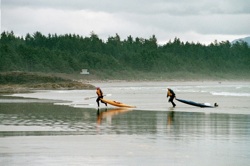 As with many of the literacies mentioned in this article, there can be overlap or linkage between natural literacy and
As with many of the literacies mentioned in this article, there can be overlap or linkage between natural literacy and 
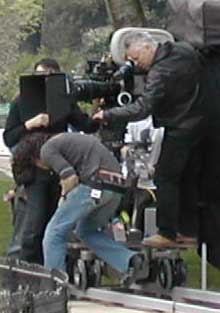 Reality TV belongs on a list of Media Oxymorons along with journalistic ethics. The world presented to young people and to all people, for that matter, is not seen through rose tinted glasses. Much of what is happening in the world is not reported at all. What is reported is often photoshopped. Note article, "Photoshopping Reality: Journalistic Ethics in an Age of Virtual Truth at
Reality TV belongs on a list of Media Oxymorons along with journalistic ethics. The world presented to young people and to all people, for that matter, is not seen through rose tinted glasses. Much of what is happening in the world is not reported at all. What is reported is often photoshopped. Note article, "Photoshopping Reality: Journalistic Ethics in an Age of Virtual Truth at 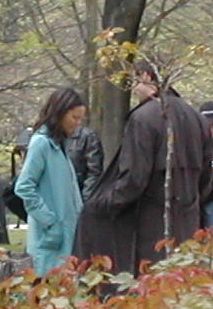

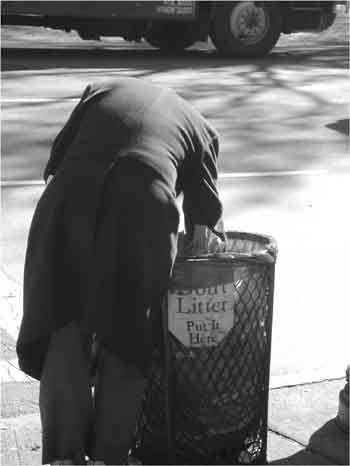
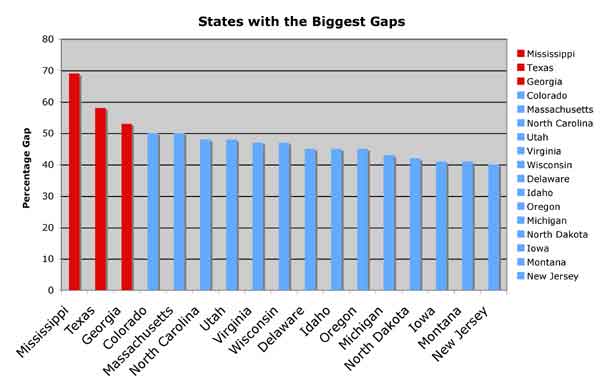
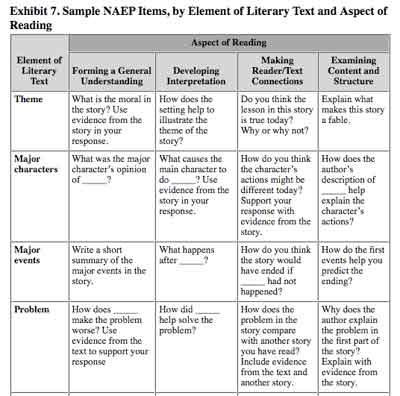
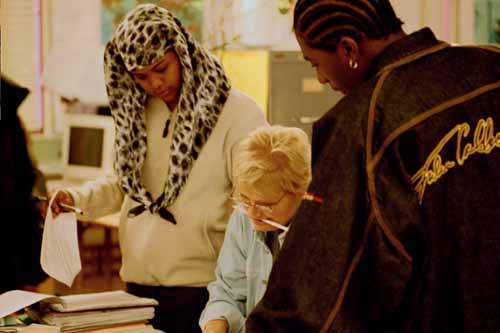 All students must learn to read the behaviors and customs of these various groups and must blend a degree of tolerance and respect into their behavior when in contact with others, whether it be as students in a school with diverse groups, as workers or as community members. Not all customs may be acceptable, as might the case with dog fighting, cock fighting or the mistreatment of women and others, but many other customs might be worth emulating. Some groups pay tremendous respect to elders, for example, a tradition that has been eroded in some so-called Western cultures. The very notion of beauty is quite different in some cultures and those countries that embrace these variants may find the arts thriving.
All students must learn to read the behaviors and customs of these various groups and must blend a degree of tolerance and respect into their behavior when in contact with others, whether it be as students in a school with diverse groups, as workers or as community members. Not all customs may be acceptable, as might the case with dog fighting, cock fighting or the mistreatment of women and others, but many other customs might be worth emulating. Some groups pay tremendous respect to elders, for example, a tradition that has been eroded in some so-called Western cultures. The very notion of beauty is quite different in some cultures and those countries that embrace these variants may find the arts thriving. 

